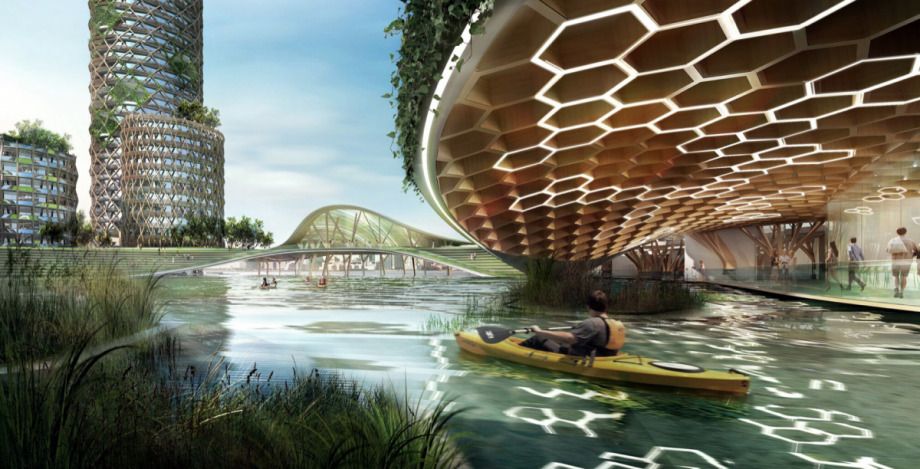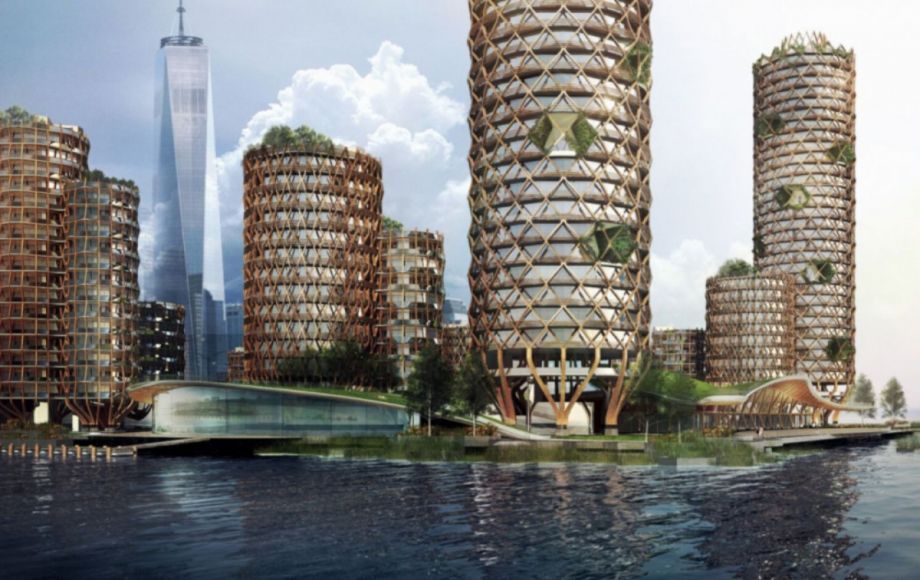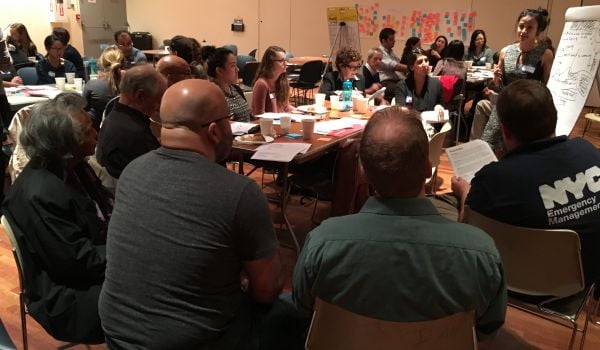Seawalls and flood insurance are all well and good, but a New York architecture firm has designed a more ambitious (but probably less practical) solution for housing people amid rising seas.
DFA’s proposal for a “floating” housing complex borrows from the often-mythologized floating cities concept that Next City has covered. But the complex would still technically be tied to the land — the latticed, cylindrical buildings would rise from New York’s dilapidated Pier 40 in the Hudson River.

(Credit: DFA)
Dezeen reports:
By adapting the existing pier – which was built in 1962 and [has] fallen into disrepair – the architecture studio is offering several responses to current issues in New York City, including a lack of affordable housing and resiliency to flooding due to climate change.
“We see so many projects going up in New York that are quick, chart-driven responses to serious problems,” said DFA founding principle Laith Sayigh. “These short-term resolutions will not safeguard the city from rapid changes in the environment or protect future generations of people.”
The firm’s website describes “four tower typologies ranging between [96 and 455 feet] tall,” for a total of 450 units. DFA used an algorithm to find the best location for each tower cluster based on the pier’s structural base. An elevated pathway would wind around the towers, set over a number of landscaped pavilions — the idea being that the lower-level gathering spaces would remain open until 2050, when river water would cover them according to current climate projections. After 2050, residents would use the elevated pathways to get around.

(Credit: DFA)

(Credit: DFA)
For now, though, DFA’s proposal is purely an exercise in creativity. In real life, the pier houses a football field and parking facility that aren’t scheduled for demolition any time soon. In 2016, Hudson River Park Trust (the group that manages the pier) sold the structure’s air rights to a group of developers. The organization now plans to use the funds from that sale to rehabilitate its current facilities, Curbed reports.
Still, the design is yet another sign that floating architecture’s moment may have finally arrived. As Rachel Keeton wrote for Next City in 2014, images of “sparkling new cities lost at sea” tend to raise municipal eyebrows, but governments are slowly coming around to the idea of developing on water.
She wrote:
If cities like New York or Tokyo build two to three percent of their development on the water, they can sell this to developers, tax the owners and create a more flexible city. Win-win. Governments are interested in this because it presents a new market for them. While most land is privately owned or already built up, by changing policies to make floating structures available the government expands its real estate. It’s a business model that is attractive because it solves multiple problems. Floating structures can reinvigorate former industrial areas like old harbors or riversides, they can adapt to extreme weather conditions better than traditional structures and they create a profit from space that is currently unmarketable.

Rachel Dovey is an award-winning freelance writer and former USC Annenberg fellow living at the northern tip of California’s Bay Area. She writes about infrastructure, water and climate change and has been published by Bust, Wired, Paste, SF Weekly, the East Bay Express and the North Bay Bohemian
Follow Rachel .(JavaScript must be enabled to view this email address)
















